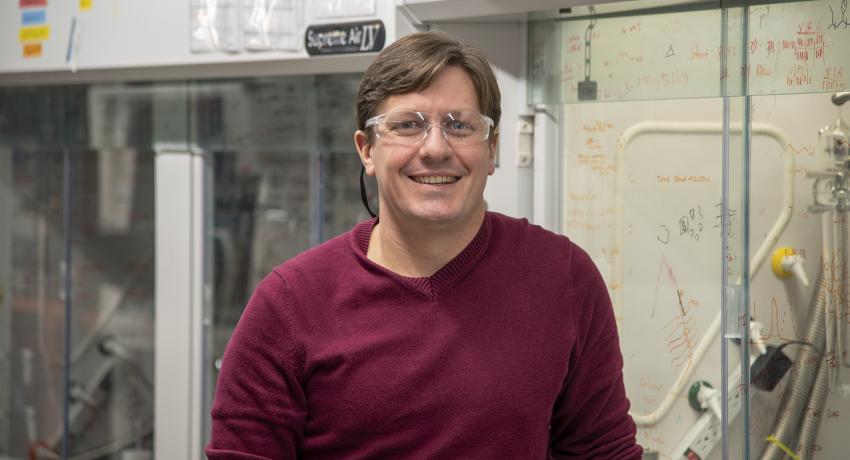Novel hydrogel finds new aptamers, or ‘chemical antibodies,’ in days
By Tim Schley
One double-helix strand of DNA could extend six feet, but it is so tightly coiled that it packs an entire sequence of nucleotides into the tiny nucleus of a cell. If that same DNA was instead split into two strands and divided into many, many short pieces, it would become trillions of uniquely folded 3D molecular structures, capable of bonding to and possibly manipulating specifically shaped molecules — if they’re the perfect fit.
New ferroelectric material could give robots muscles
By Jamie Oberdick
UNVERSITY PARK, Pa. — A new type of ferroelectric polymer that is exceptionally good at converting electrical energy into mechanical strain holds promise as a high-performance motion controller or “actuator” with great potential for applications in medical devices, advanced robotics, and precision positioning systems, according to a team of international researchers led by Penn State.
Researchers use water treatment method to capture acids from agricultural waste
By Mariah R. Lucas
UNIVERSITY PARK, Pa. — Bound for the landfill, agricultural waste contains carbon sources that can be used to produce high-value compounds, such as p-coumaric acid, which is used in manufacturing pharmaceuticals. Electrodeionization, a separation method that uses ion-exchange membranes, is one way to capture the acids and other useful components. However, to capture large quantities at scale, improvements to the method must be made.
NSF grant expands materials science research at Penn State Behrend
ERIE, Pa. — A $385,000 grant from the National Science Foundation will fund the purchase of an Instron drop tower impact-testing system at Penn State Behrend, where faculty members are developing new approaches to polymer recycling and the formulation of new composites.
At least 10 faculty members will use the system to advance their research, which includes automotive and aerospace partnerships. Another will use it to test new polymers for ski boots and bindings.
Qiming Zhang
(e) qxz1@psu.edu
(o) 814-863-8994
N-219 Millennium Science Complex
Alicyn Rhoades
(e) amh234@psu.edu
(o) 814-898-6287
242 Jack Burke Research Center, Erie
Ryan Harne
(e) rqh5445@psu.edu
(o) 814-865-2519
336 Reber Building
Enrique Gomez
(e) edg12@psu.edu
(o) 814-867-3428
404 Steidle Building
Elizabeth Elacqua
(e) eze31@psu.edu
(o) 814-865-1221
104 Chemistry Building










